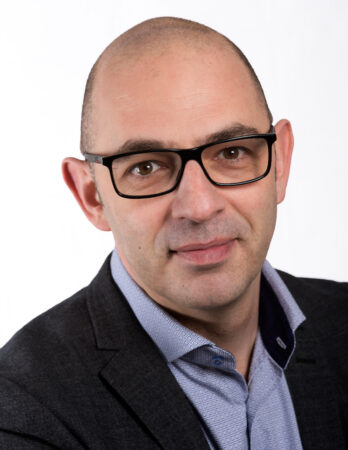

Leo Levit, ONVIF
Appointed as chair of the ONVIF steering committee in 2021, Leo Levit’s tenure includes a major milestone: the organization’s 15th anniversary.
Established in 2008, ONVIF was founded by its three original members: Axis Communications, Bosch Security Systems and Sony. ONVIF now comprises about 500 members and offers five levels of membership (full, contributing, registered affiliate, user and observer member).
ONVIF’s mission is to “provide and promote standardized interfaces for effective interoperability of IP-based physical security products.” Accordingly, it has developed seven profiles, covering everything from surveillance systems to access control, and its members have collectively released more than 25,000 profile-conformant products.
“Our work is certainly not done yet,” said Levit when the organization turned 15 earlier this year. “As the industry continues to adopt video analytics, Artificial Intelligence, cloud and IoT, the role of ONVIF as a provider of standardized interfaces in these domains will only become more relevant.”
SP&T News reached out to ONVIF and Levit to find out more about those next steps. Levit responded to questions via email.
SP&T News: What has the organization learned in the last 15 years in terms of evolving standards (and adding new ones) that make the technology experience more positive for both installers and end users?
Leo Levit: We have seen that over the last 15 years, standards that gain acceptance and adoption in the market are those that have truly evolved from the needs of the industry. Collaborating with different partners, embracing consensus among competitors, and focusing on the things the industry actually needs to grow have been crucial for success.
Interoperability between different systems and devices has become increasingly important, and ONVIF is well-positioned to continue to develop standards that enable seamless integration between products from different manufacturers.
Continuing to listen to the needs of the industry will always be vital to the success of ONVIF. A good example of this is Profile M, which addresses the booming video analytics market and new opportunities for integrators in this area.
Profile M enables integrators to build analytics applications in a much easier way by interpreting analytics metadata and events in a standardized way. This enables the parts of the system to automatically understand each other, creating a positive technology experience for both installers and end users.
SP&T: What are ONVIF’s greatest accomplishments?
LL: Our greatest achievement has been to reach the milestone of more than 25,000 products that conform to ONVIF profiles. This is a manifestation of the importance of standards because it means that end users and systems integrators have a very, very broad range of products to choose from to build systems with interoperable components regardless of the manufacturer. I think this is the greatest marker of the success of ONVIF as an organization and the path that we are on. The number of products and our number of members — around 500 companies that represent a majority of the video surveillance market — is something ONVIF should be very proud of.
SP&T: Were there any unforeseen developments? Did ONVIF adopt an unexpected stance or assume a role that was unthinkable 15 years ago?
LL: The pandemic was the most unforeseen development and made us rethink how a global organization can function in an environment where physical meetings were impossible. Like many organizations, ONVIF learned from this and actually made it through this time quite well. What has really held true over the last 15 years is our mission and vision. Even though the industry has changed quite dramatically, we are still committed to the same principles that we defined at the beginning: providing standardized interfaces for interoperability for IP physical security products.
SP&T: How will the rapid development of AI and cloud-based infrastructure continue to affect ONVIF standards?
LL: As a standards organization in this industry, we need to help facilitate the industry’s adaptation of these new technologies and continue to embrace interoperability between different components in the surveillance system.
The rise of AI and cloud technology certainly does affect us and it is giving us additional opportunities to expand the scope of ONVIF, including those that incorporate AI and cloud-based infrastructure. This will include specifying how metadata and events generated by AI and analytics devices can be communicated and stored in the cloud, as well as how these devices can authenticate and communicate with other parts of a hybrid system.
Profile M is our first attempt to specify analytics and metadata and events sent from analytics devices to help solve interoperability issues with analytics and AI.
SP&T: What’s next for ONVIF? The industry has changed a lot since its creation. What might the next 15 years look like?
LL: It’s really difficult to predict the next 15 years! The industry is changing so rapidly and it’s challenging to anticipate which technology advances will be adopted that far into the future. I do know that the future of ONVIF is to play a very important role in the security and surveillance industry, expanding our standardization efforts into the different parts of the cloud, where the pace of development is higher than ever before.
Print this page
Advertisement
- Huronia donates security equipment and services to Elmvale Foundation
- ASSA ABLOY acquires U.K. door company